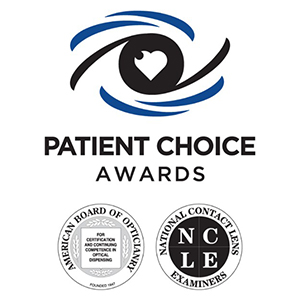 What is this annoying sound?
What is this annoying sound?
Oh yeah, the alarm. Must be 7:00am.
Monday morning, back to work.
And so another week begins.
It is easy to fall in to the monotonous work life routine; you go there at the same time, you do the same things, you hang with the same people. This is the human default setting, inertia, doing the same thing again and again and again.
The human paradox is that we are striving for happiness and meaning while our default is inertia. In order to achieve satisfaction and success in your work life, you have to have a plan. Simple, right? Not really. Above all, it takes discipline and persistence. There is that nasty word, again: discipline. In order to make it somewhat more palatable, the rewards for doing the work have to outweigh the struggle. The only way to this is to follow your plan and not someone else’s plan for you.
To design your plan you have to think of it like a roadmap. First, consider your vision. You would never go on a trip without knowing where you are going, right? So, where do you want to go this year and why do you want to go there? What is your mission? Why do you do what you do? And lastly, what will be your landmarks along the way? What will guide you?
By answering these questions, you have designed the first part of a strategic business plan:- Your vision
- Your mission
- Your guiding principles.

Next you want to consider your goals. The right target will force you to exert effort, stretch you, and require you to come into contact with something new. After all, what’s the point of going on a trip if you don’t want to see what’s out there?
In business, a very possible goal could be to increase your sales, let’s say by 15 percent. You can easily calculate the numbers you have to hit along the way to get you to the desired goal by the end of the year. Those waypoints are known as critical success factors; you have to hit those marks to stay on target.
The desire of any plan is to set you up for success. So, let’s consider what may get in your way. Many factors can influence your work life; some of them outside of your control, some of them within your circle of influence. You cannot affect the overall economy and consumer behavior, but you can certainly make sure that you know and serve your client’s needs, welcome them into a clutter-free environment and educate and advise them on the latest technology advances in the optical business. What will you do if a new competitor moves into your area? How will you deal with the increasing number of vision plans? How will you cope with rising costs for goods? What are you going to do if you fall back into the old habit of procrastination?
Considering these possible barriers will help you to stay on course if they should really happen.
Now you know where you want to go, why you want to go there, what you want to experience along the way, the waypoints you have to make and you are also clear on what may possibly get in your way.
 Once you decide on the road to take, it is just a question of choosing the right vehicle. Let’s go back to the 15 percent increase in sales, and assume that means an increase of $2000 per week. Then one extra pair of eyeglasses sold per day will get you to your desired number. Your strategy is to make one additional sale per day. What actions might help you accomplish your goal? How about offering Rx sunglasses to each patient? And really each patient, not just the ones you consider might be interested in eye protection from the harm of UV light. You could also focus on educating your patients on the danger of blue light. Combined with freeform near variable focus lenses, these glasses give the best comfort and protection for anybody working at the computer for any length of time. How about sunglasses and computer glasses for your contact lens patients? Or night-time driving glasses for your mono vision CL patients?
Once you decide on the road to take, it is just a question of choosing the right vehicle. Let’s go back to the 15 percent increase in sales, and assume that means an increase of $2000 per week. Then one extra pair of eyeglasses sold per day will get you to your desired number. Your strategy is to make one additional sale per day. What actions might help you accomplish your goal? How about offering Rx sunglasses to each patient? And really each patient, not just the ones you consider might be interested in eye protection from the harm of UV light. You could also focus on educating your patients on the danger of blue light. Combined with freeform near variable focus lenses, these glasses give the best comfort and protection for anybody working at the computer for any length of time. How about sunglasses and computer glasses for your contact lens patients? Or night-time driving glasses for your mono vision CL patients?
You see there are many action plans that will get you to your chosen goal line. However, don’t let the planning process keep you from getting started. Implementation is vital. You can always change your action plan, but first, you have to get started.
These are the essential steps of a strategic business plan. Yes, it can be that simple. Don’t get scared off by the big words, or hide behind the “too busy” excuse. Just do it!!

|
Maggie Sayers is a professional development coach and a Master Optician. Her optical career started over 30 years ago in a family business in Germany.
Since she came to Florida in 1987, she has worked diligently to promote high professional standards in opticianry. Her mission is to help opticians achieve their personal success through serving the public as vision experts.
As a professional development coach Maggie provides education workshops that focus on leadership and personal engagement. Her time management course has inspired many participants to think outside the box, apply newly acquired knowledge and achieve extraordinary results.
Maggie's enthusiasm for opticianry is inspiring and her keen business sense paired with excellent communication skills make her a highly sought after motivational speaker.












